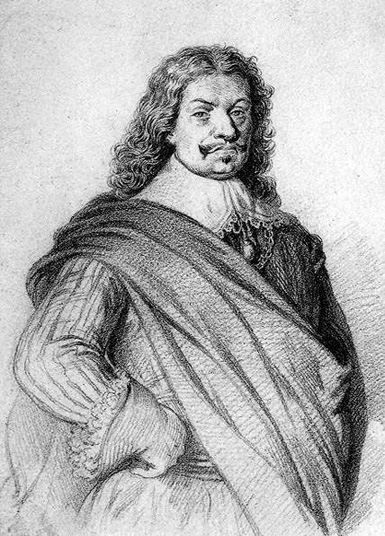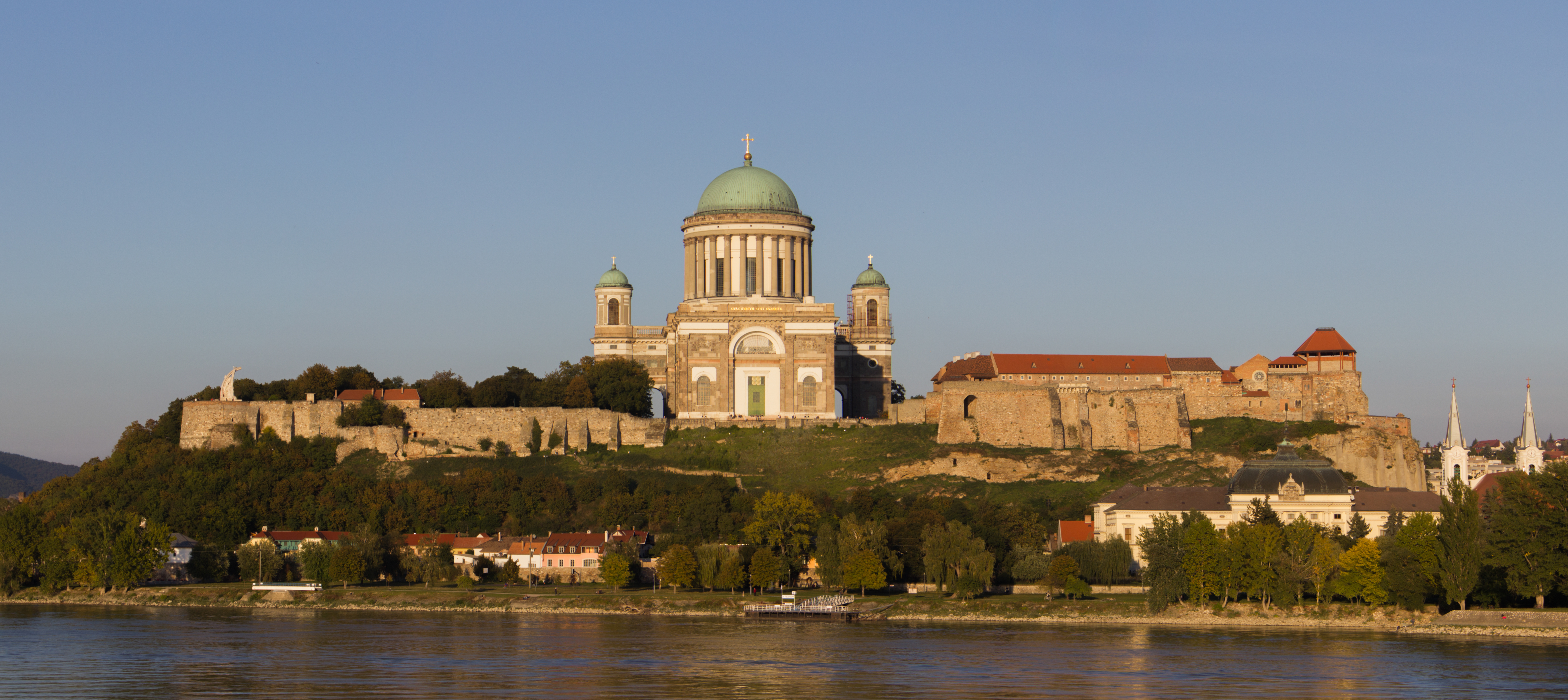|
Henri Duval, Count Of Dampierre
Henri Duval, Count of Dampierre (1580 — 8 October 1620), often known simply as Henri de Dampierre, was a commander of imperial forces during the Bohemian Revolt that initiated the Thirty Years' War. Life Born in the castle of Hans, in the Prince-Bishopric of Metz The Diocese of Metz ( la, Dioecesis Metensis; french: Diocèse de Metz) is a Latin Church ecclesiastical territory or diocese of the Catholic Church in France. In the Middle Ages it was a prince-bishopric of the Holy Roman Empire, a ''de facto ..., Dampierre entered Austrian Habsburg service in 1602, during the Long Turkish War, and fought under Giorgio Basta against Stephen Bocskai during the Bocskai uprising.Wilhelm Edler von Janko, "Dampierre, Heinrich Duval Graf von", ''Allgemeine Deutsche Biographie'', vol. 4 (Leipzig, 1876), p. 719. In 1605, mutineers in the garrison he was commanding forced him to surrender Esztergom to the besieging Turks. Dampierre was an active commander during the Uskok War, and in 1618 ... [...More Info...] [...Related Items...] OR: [Wikipedia] [Google] [Baidu] |
Heinrich Duval Graf Von Dampierre Seite 1 Bild 0001
Heinrich may refer to: People * Heinrich (given name), a given name (including a list of people with the name) * Heinrich (surname), a surname (including a list of people with the name) *Hetty (given name), a given name (including a list of people with the name) Places * Heinrich (crater), a lunar crater * Heinrich-Hertz-Turm, a telecommunication tower and landmark of Hamburg, Germany Other uses * Heinrich event, a climatic event during the last ice age * Heinrich (card game), a north German card game * Heinrich (farmer), participant in the German TV show a ''Farmer Wants a Wife'' * Heinrich Greif Prize, an award of the former East German government * Heinrich Heine Prize, the name of two different awards * Heinrich Mann Prize, a literary award given by the Berlin Academy of Art * Heinrich Tessenow Medal, an architecture prize established in 1963 * Heinrich Wieland Prize, an annual award in the fields of chemistry, biochemistry and physiology * Heinrich, known as Haida in Ja ... [...More Info...] [...Related Items...] OR: [Wikipedia] [Google] [Baidu] |
Uskok War
The Uskok War, also known as the War of Gradisca, was fought by the Austrians, Croats, and Spanish on one side and the Venetians, Dutch, and English on the other. It is named for the Uskoks, soldiers from Croatia used by the Austrians for irregular warfare. Since the Uskoks were checked on land and were rarely paid their annual salary, they resorted to piracy. In addition to attacking Turkish ships, they attacked Venetian merchantmen. Although the Venetians tried to protect their shipping with escorts, watchtowers, and other protective measures, the cost became prohibitive: 120,000 thalers annually during the 1590s, 200,000 in the 1600s, and 360,000 by 1615.Parker, Geoffrey. ''The Thirty Years' War'', 2nd edition. 1997. In December 1615 Venetian troops besieged Gradisca, on the Isonzo River. The Venetians launched a diplomatic campaign for allies, since the Uskoks were vassals of Archduke Ferdinand of Inner Austria (who was likely to seek help from the Holy Roman Emperor ... [...More Info...] [...Related Items...] OR: [Wikipedia] [Google] [Baidu] |
1580 Births
Year 158 ( CLVIII) was a common year starting on Saturday (link will display the full calendar) of the Julian calendar. At the time, it was known as the Year of the Consulship of Tertullus and Sacerdos (or, less frequently, year 911 ''Ab urbe condita''). The denomination 158 for this year has been used since the early medieval period, when the Anno Domini calendar era became the prevalent method in Europe for naming years. Events By place Roman Empire * The earliest dated use of Sol Invictus, in a dedication from Rome. * A revolt against Roman rule in Dacia is crushed. China * Change of era name from ''Yongshou'' to ''Yangxi'' of the Chinese Han Dynasty. Births *Gaius Caesonius Macer Rufinianus, Roman politician (d. 237 Year 237 ( CCXXXVII) was a common year starting on Sunday (link will display the full calendar) of the Julian calendar. At the time, it was known as the Year of the Consulship of Perpetuus and Felix (or, less frequently, year 990 ''Ab urbe ... [...More Info...] [...Related Items...] OR: [Wikipedia] [Google] [Baidu] |
Bratislava Castle
Bratislava Castle ( sk, Bratislavský hrad, ; german: Pressburger Burg; hu, Pozsonyi vár) is the main castle of Bratislava, the capital of Slovakia. The massive rectangular building with four corner towers stands on an isolated rocky hill of the Little Carpathians directly above the Danube river in the middle of Bratislava. Because of its size and location, it has been a dominant feature of the city for centuries. The location provides excellent views of Bratislava, Austria and, in clear weather, parts of Hungary. Many legends are connected with the history of the castle. The castle site The following are at the castle site: Castle building (The Palace) The castle building includes four towers (one on each corner) and a courtyard with a deep water well. The largest and tallest tower is the Crown Tower on the southwest corner. The tower dates from the 13th century and for approximately 200 years beginning in the mid-1500s housed the crown jewels of Hungary. The exter ... [...More Info...] [...Related Items...] OR: [Wikipedia] [Google] [Baidu] |
Gabriel Bethlen
Gabriel Bethlen ( hu, Bethlen Gábor; 15 November 1580 – 15 November 1629) was Prince of Transylvania from 1613 to 1629 and Duke of Opole from 1622 to 1625. He was also King-elect of Hungary from 1620 to 1621, but he never took control of the whole kingdom. Bethlen, supported by the Ottomans, led his Calvinist principality against the Habsburgs and their Catholic allies. Early life Gabriel was the elder of the two sons of Farkas Bethlen de Iktár and Druzsiána Lázár de Szárhegy. Gabriel was born in his father's estate, Marosillye (now Ilia in Romania), on 15 November 1580. Farkas Bethlen was a Hungarian nobleman who lost his ancestral estate, Iktár (now Ictar-Budinț in Romania), due to the Ottoman occupation of the central territories of the Kingdom of Hungary. Stephen Báthory, Prince of Transylvania, granted Marosillye to him and made him captain-general of the principality. Druzsiána Lázár was descended from a Székely noble family. Both Farkas Bethlen ... [...More Info...] [...Related Items...] OR: [Wikipedia] [Google] [Baidu] |
Hofburg Palace
The Hofburg is the former principal imperial palace of the Habsburg dynasty. Located in the centre of Vienna, it was built in the 13th century and expanded several times afterwards. It also served as the imperial winter residence, as Schönbrunn Palace was the summer residence. Since 1946, it is the official residence and workplace of the president of Austria. Since 1279, the Hofburg area has been the documented seat of government.Aeiou-Hofburg-English , "Hofburg, Wien" (history), ''Encyclopedia of Austria'', Aeiou Project, 2006. The Hofburg has been expanded over the centuries to include various residences (with the ''Amalienburg'' and the Albertina), the imperial chapel (''Hofkapelle'' or ''Burgkapelle''), the [...More Info...] [...Related Items...] OR: [Wikipedia] [Google] [Baidu] |
Ferdinand II, Holy Roman Emperor
Ferdinand II (9 July 1578 – 15 February 1637) was Holy Roman Emperor, King of Bohemia, Hungary, and Croatia from 1619 until his death in 1637. He was the son of Archduke Charles II of Inner Austria and Maria of Bavaria. His parents were devout Catholics, and, in 1590, they sent him to study at the Jesuits' college in Ingolstadt because they wanted to isolate him from the Lutheran nobles. In July that same year (1590), when Ferdinand was 12 years old, his father died, and he inherited Inner Austria– Styria, Carinthia, Carniola and smaller provinces. His cousin, the childless Rudolf II, Holy Roman Emperor, who was the head of the Habsburg family, appointed regents to administer these lands. Ferdinand was installed as the actual ruler of the Inner Austrian provinces in 1596 and 1597. Rudolf II also charged him with the command of the defense of Croatia, Slavonia, and southeastern Hungary against the Ottoman Empire. Ferdinand regarded the regulation of religious issue ... [...More Info...] [...Related Items...] OR: [Wikipedia] [Google] [Baidu] |
8th Bohemian Dragoons (Count Montecuccoli's)
, image= Kaiserliches Kürassierregiment K 2 1734 Gudenushandschrift.jpg , image_size = 150 , caption=The Imperial Cuirassier Regiment, the Young Savoys (Eugene John, Prince of Savoy) (K 2)in the War of the Polish Succession in 1734 , dates= 1619 or 1683 to 1918 , country= Habsburg States , type=cavalry , garrison=see article , command_structure = Liste der Kavallerieregimenter der kaiserlich-habsburgischen Armee der Frühen Neuzeit , identification_symbol =Tessin: 1683/1 , identification_symbol_label =First designation , identification_symbol_2 = Bleckwenn: Kaiser Regiment K 2 , identification_symbol_2_label =Second designation , identification_symbol_3 =1769: 4th Cavalry Regiment , identification_symbol_3_label =Third designation , identification_symbol_4 =1798: 6th Cuirassier Regiment , identification_symbol_4_label =Fourth designation , identification_symbol_5 =1888: 8th Bohemian Dragoons (Count Montecuccoli's) , identification_symbol_5_label =Final designation , bat ... [...More Info...] [...Related Items...] OR: [Wikipedia] [Google] [Baidu] |
Battle Of Wisternitz
The Battle of Wisternitz or Dolní Věstonice was fought on 5 August 1619 between a Moravian force of the Bohemian Confederation under Friedrich von Tiefenbach (Teuffenbach) and a Habsburg army under Henri de Dampierre. The battle was a Moravian victory. The battle is part of the Thirty Years' War. Budweis (České Budějovice) was one of the three towns which remained loyal to King Ferdinand of House Habsburg when Bohemia revolted. After the Habsburg victory at Sablat, the Bohemians were forced to raise the siege of České Budějovice. On 15 June 1619, Georg Friedrich of Hohenlohe-Neuenstein-Weikersheim retreated to Soběslav where he awaited reinforcement by Count Heinrich Matthias von Thurn. After taking control of the strong places of southern Bohemia, Ferdinand sent a force under Dampierre to Moravia, which had chosen the side of the Bohemian rebels. However, Dampierre was defeated at Dolní Věstonice (german: Wisternitz) by Moravian forces under von Tiefenbach (b ... [...More Info...] [...Related Items...] OR: [Wikipedia] [Google] [Baidu] |
Esztergom
Esztergom ( ; german: Gran; la, Solva or ; sk, Ostrihom, known by alternative names) is a city with county rights in northern Hungary, northwest of the capital Budapest. It lies in Komárom-Esztergom County, on the right bank of the river Danube, which forms the border with Slovakia there. Esztergom was the capital of Hungary from the 10th until the mid-13th century when King Béla IV of Hungary moved the royal seat to Buda. Esztergom is the seat of the ''prímás'' (see Primate) of the Roman Catholic Church in Hungary, and the former seat of the Constitutional Court of Hungary. The city has a Christian Museum with the largest ecclesiastical collection in Hungary. Its cathedral, Esztergom Basilica, is the largest church in Hungary. Toponym The Roman town was called ''Solva''. The medieval Latin name was ''Strigonium''. The first early medieval mention is "''ſtrigonensis trigonensiscomes''" (1079-1080). The first interpretation of the name was suggested by A ... [...More Info...] [...Related Items...] OR: [Wikipedia] [Google] [Baidu] |
Bohemian Revolt
The Bohemian Revolt (german: Böhmischer Aufstand; cs, České stavovské povstání; 1618–1620) was an uprising of the Bohemian estates against the rule of the Habsburg dynasty that began the Thirty Years' War. It was caused by both religious and power disputes. The estates were almost entirely Protestant, mostly Utraquist Hussite but there was also a substantial German population that endorsed Lutheranism. The dispute culminated after several battles in the final Battle of White Mountain, where the estates suffered a decisive defeat. This started re-Catholisation of the Czech lands, but also expanded the scope of the Thirty Years' War by drawing Denmark and Sweden into it. The conflict spread to the rest of Europe and devastated vast areas of Central Europe, including the Czech lands, which were particularly stricken by its violent atrocities. Rebellion Without heirs, Emperor Matthias sought to assure an orderly transition during his lifetime by having his d ... [...More Info...] [...Related Items...] OR: [Wikipedia] [Google] [Baidu] |





